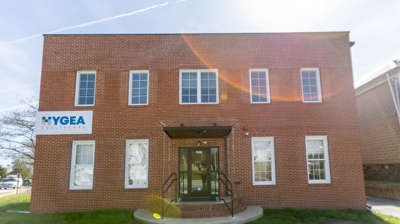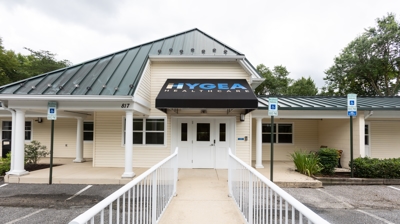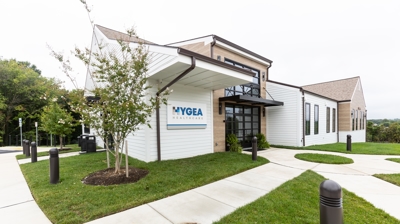Understanding Addiction as a Disease
Addiction is defined as “a chronic, relapsing disorder characterized by compulsive drug seeking, continued use despite harmful consequences, and long-lasting changes in the brain.” [1] While many people initially choose to use substances voluntarily, continued use can lead to brain changes that challenge an addicted person’s self-control and ability to resist intense urges.
The Science Behind Addiction
Research has conclusively shown that addiction affects the brain’s structure and function. Substances of abuse target the brain’s reward system by flooding it with dopamine, a neurotransmitter that regulates feelings of pleasure, motivation, and satisfaction. These changes can persist long after substance use stops, which is why addiction is considered a “relapsing” disease—people in recovery remain at increased risk for returning to drug use even after years of abstinence.
Nearly 48.5 million Americans (16.7% of the population aged 12 and older) battled a substance use disorder in the past year, demonstrating how widespread this condition is in our society. [2]
Brain Circuits Affected by Addiction
Addiction impacts several critical brain regions:
- Reward circuit (includes the nucleus accumbens, ventral tegmental area)
- Decision-making centers (prefrontal cortex)
- Stress regulation systems (amygdala)
- Memory formation (hippocampus)
These neurological changes explain why willpower alone is rarely sufficient for overcoming addiction. As the brain adapts to substance use, individuals require more of the substance to achieve the same effect (tolerance) and experience uncomfortable or painful symptoms when use is reduced or stopped (withdrawal).
Risk Factors for Addiction
No single factor determines whether a person will develop addiction. The risk is influenced by a combination of factors:
Biology
Genetics account for about 40-60% of a person’s risk for addiction. [3] Gender, ethnicity, and the presence of mental disorders may also influence risk.
Environment
Environmental factors include family dynamics, peer influences, socioeconomic status, and early exposure to substances. Children who experience early-life stress or trauma face heightened vulnerability to substance use disorders later in life.
Development
Genetic and environmental factors interact with critical developmental stages to affect addiction risk. Although substance use can lead to addiction at any age, earlier onset typically increases the likelihood of developing a substance use disorder.
Only about 22% of people with an opioid use disorder received treatment in 2021, highlighting the significant treatment gap that exists nationwide. [4]
Signs and Symptoms of Addiction
Addiction manifests differently in each individual, but common signs include:
Behavioral Signs
- Using larger amounts or for longer periods than intended
- Persistent desire or unsuccessful efforts to cut down
- Spending excessive time obtaining, using, or recovering from substances
- Cravings or strong urges to use
- Failing to fulfill obligations at work, school, or home
- Continued use despite social or interpersonal problems
Physical Signs
- Tolerance (needing more of the substance for the same effect)
- Withdrawal symptoms when not using
- Changes in appearance (weight loss/gain, skin problems)
- Sleep disturbances
- Coordination problems
- Changes in energy levels
Treatment and Recovery
Addiction is a treatable disorder. Evidence-based interventions can help people stop using substances and resume productive lives. Effective approaches include:
- Medications: FDA-approved medications can help manage withdrawal symptoms, prevent relapse, and treat co-occurring mental health conditions.
- Behavioral therapies: Cognitive-behavioral therapy (CBT) helps patients recognize, avoid, and cope with situations where they’re likely to use substances.
- Integrated treatment: Addressing co-occurring mental health issues alongside substance use disorders.
At Hygea Healthcare, we provide comprehensive detox services with medical supervision and personalized care plans. Our “Recovery Without Barriers” approach ensures that treatment is accessible regardless of socioeconomic status or payer type.
Only 14.6% of people with a substance use disorder received treatment in 2023, emphasizing the critical need for expanded access to care like that provided by Hygea Healthcare’s Maryland facilities. [5]
Do you or a loved one need help? Reach out to our admissions team that will get you the help you need today.
Ready to take the first step?
Contact us today for a confidential consultation and begin your path to wellness.
Our Promise to yOU

Community Connection
We help you build strong connections with local resources and support networks to enhance your recovery journey.

Compassionate Support
We treat you with empathy and respect, offering a supportive environment where you can feel safe and understood.

Experienced Team
Our skilled team combines expertise from various fields to provide comprehensive and effective care.

Personalized Care
We tailor our treatment plans to fit your unique needs, ensuring you receive the care and support you deserve.

Hygea @ Belair
6415 Belair Rd.
Baltimore, MD 21206
(410) 512-9525
Services Offered:
Residential

Hygea @ Camp Meade
817 S. Camp Meade Rd.
Linthicum, MD 21090
(410) 512-9525
Services Offered:
Residential

Hygea @ Middle River
1210 Middle River Rd.
Middle River, MD 21220
(410) 512-9525
Services Offered:
Inpatient Detox | Residential
Have questions or need support?
We Are Ready to Help
Reach out to our compassionate team for assistance and guidance on your road to recovery.





